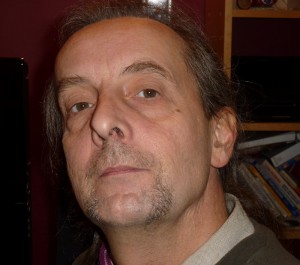This is an article I wrote for The Conversation. You can read the original article here.
The tragedy at Grenfell Tower has brought the inequalities that exist in British society into sharp relief. The number of dead or missing and presumed dead has risen to 79 people in one of the Britain’s wealthiest areas, due to what London Mayor Sadiq Khan called a “preventable accident” caused by years of “mistakes and neglect” by government officials. Meanwhile, there have been accusations that the local council and building management organisation failed to listen to residents’ warnings about the risk of fire.
My ongoing research indicates that these points may all be linked. It’s a well-established fact that fire has always affected poorer communities more. To prevent fires, there must be effective engagement between communities and public services. But my findings suggest that the way these services operate does little to encourage disadvantaged and marginalised communities to work with them.
Searching for answers
In my own analysis of house fires in the West Midlands, I found striking inequalities in the way that fires are distributed. Areas with high rates of fire also tended to be areas where residents’ income was lower, unemployment more widespread, or a higher proportion of the residents came from black and minority ethnic groups. One earlier study found that children whose parents were long-term unemployed were a staggering 26 times more likely to die of fire related injuries than children whose parents were in higher managerial and professional occupations.
Surprisingly, though, there is little solid evidence explaining why this is so. It is easy to think of some possible reasons: poor quality housing; the inability to afford modern, safer electrical equipment; higher rates of smoking (smoking is a major cause of fire deaths). But the truth is that we just don’t know. It may be, though, that the communities affected by high rates of fire have some ideas. This is one reason why it’s crucial that those charged with improving fire safety learn to listen.

Deep fried plantain – delicious, but risky.. Fimb/Flickr, CC BY
I spent time talking to people in a diverse, disadvantaged part of the West Midlands. Among those I spoke to was Peter, a Tanzanian man. I had already established that areas with high African populations tended to have high rates of fire. Peter had no doubt as to why this was. His community, he told me, are not used to cooking on gas and do a lot of deep frying. Information like this is of great value to those interested in improving fire safety. But it is information that will be lost to fire safety officers and local councils alike, if they don’t engage with the diverse communities that they serve.
Working together
It’s important to recognise that fire prevention is not something which can be done to a community. The community must join in and take part – it is a joint effort. In the disadvantaged area where I worked, people were very wary of dealing with public services any more than necessary. This meant that they were unlikely to engage with the local fire service, or with other groups attempting to promote such things as fire safety or healthier eating. And many of the reasons I heard for this were far less likely to affect more affluent, middle-class residents.
For one thing, the people I spoke with were fed up with nothing ever changing. They felt that they weren’t being listened to, and no matter what they said or did their lives stayed the same – so they had given up trying to engage with services. They also worried that having contact with one service would lead to unwanted contact with other services, with social services being a particular fear, as others have noted. And they felt judged – judged for needing help, judged for where they lived.
What’s more, fire was just not a priority. It seemed an unlikely possibility, set against all the other pressing problems they had to worry about, such as the bus service being withdrawn or the landlord not carrying out repairs. And for many, the prospect of engaging with local services to make their homes safer felt daunting. The language used by public sector workers was confusing. The way in which meetings were run was unfamiliar. Organisations dominated by middle-class, white employees tended to approach engagement in ways which make sense to middle-class white people. This created services which felt uncomfortable and unfamiliar to many of those who I spoke to.
If tragedies like Grenfell Tower are to be avoided in the future, public services need to get much better at engaging with the communities that they serve. And because those communities are diverse, the approaches taken to engage must also be diverse. Examples of valuable efforts I came across included hanging out in hairdressers frequented by African women, and working in partnership with an organisation with existing links to sex workers, to try to reach them.
Creating environments in which people from many backgrounds feel safe and comfortable engaging is a huge challenge for many in the public sector. It will push organisations out of their comfort zone. It will require time, investment and new skills. But these challenges can no longer be deferred, if we want to build a society which is fairer and safer for everyone.
Chris Hastie, PhD candidate, Centre for Trust, Peace and Social Relations, Coventry University
This article was originally published on The Conversation. Read the original article.







